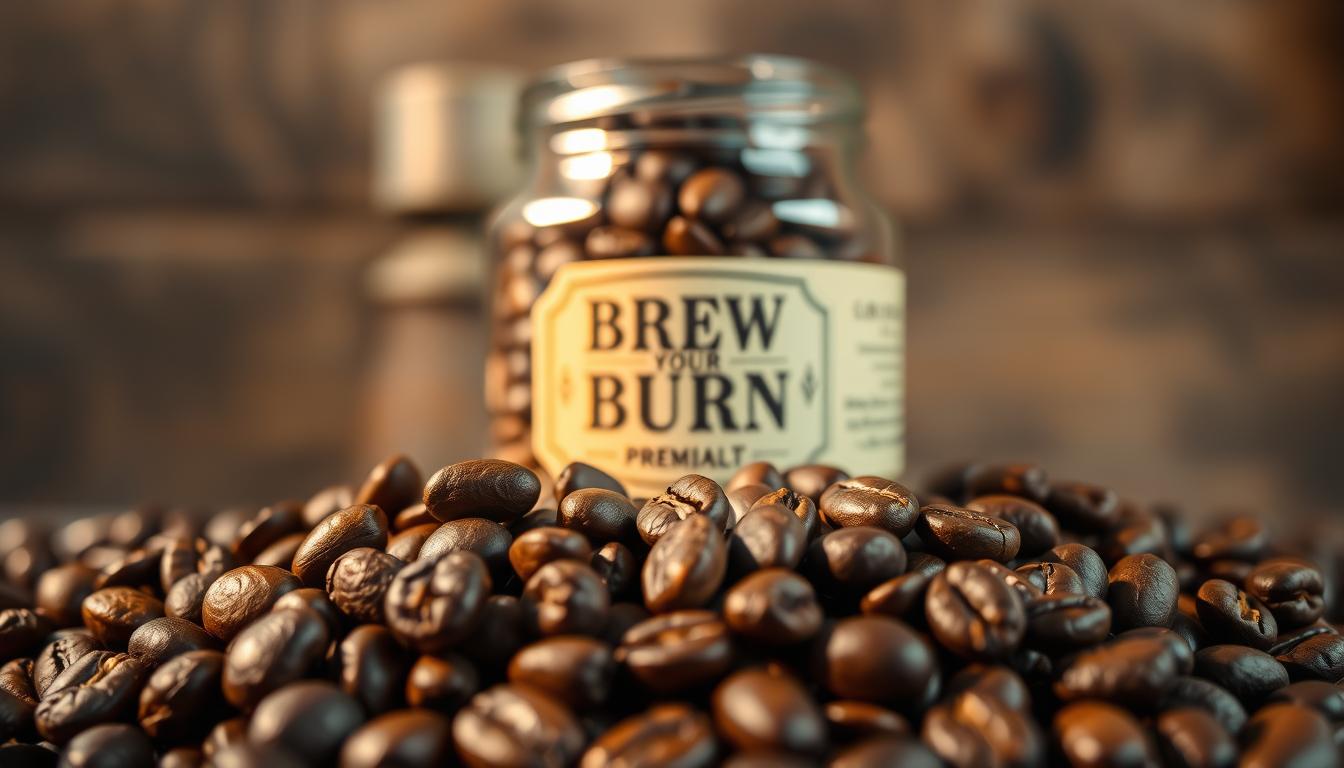Switching from instant coffee to freshly roasted beans is a straightforward way to elevate your daily coffee experience.
Specialty coffee beans keep delicate oils and compounds that instant coffee loses. Grinding and brewing just before serving brings out floral, fruity, and earthy flavors.
Specialty coffee beans score above 80 points by certified tasters. They come from specific regions and are grown with care.
This focus on quality means the best coffee beans are roasted in small batches or even roast-to-order. You get a fresher taste and clearer aromas that store-bought blends can’t match.
Choosing gourmet or premium coffee beans also supports better farming practices. Many specialty roasters work directly with farmers.
This encourages sustainable farming and fairer prices. Brewing whole beans becomes a simple ritual that boosts enjoyment and gives you more control over taste.
Home roasting and smart storage can extend freshness and save money. Coffee tastes best within a month after roasting.
So, buy small amounts, keep beans away from light and heat, and grind just before brewing for the fullest flavor.
Key Takeaways
- Specialty coffee beans preserve more aroma and flavor than instant coffee.
- Beans scored above 80 by certified tasters qualify as specialty.
- Buying the best coffee beans often means opting for small-batch roasting and enjoying fresher cups.
- Gourmet and premium coffee beans tend to support sustainable sourcing.
- Buy small, store properly, and grind fresh to get the most from each bag.
Why specialty coffee beans matter for your daily brew
Choosing beans with care changes your morning coffee. Specialty coffee beans have complex flavors from their origin and processing.
Grinding them fresh brings out a bright aroma and layered taste.
Definition and grading of specialty coffee beans
Specialty coffee beans score above 80 out of 100. This score means they have clear flavors, balance, and no defects.
Many come from single farms or small regions, so you can know where they started.
Flavor, aroma, and the 80+ scoring standard
Scoring focuses on taste notes like fruity, floral, or chocolate. Roasters like Stumptown and Intelligentsia roast small batches to keep these qualities.
With premium beans, you get a nuanced taste that’s enhanced when brewed right.
How specialty beans differ from regular and instant coffee
Regular coffee can sit on shelves for months, losing flavor. Instant coffee also loses much of its aroma during processing.
Choosing single origin or artisan coffee beans means you get freshness and a direct connection to growers.
How origin and single origin coffee beans shape flavor
Origin is key to a coffee’s taste. Soil, altitude, and climate give each bean a unique flavor. Growers’ careful work keeps these flavors clear and strong.
Terroir impacts coffee’s acidity, body, and smell. Higher altitudes make the coffee brighter and fruitier.
Volcanic soils add minerals, while dry seasons and rainfall affect the coffee’s sweetness and smell.
Here are some examples of how origin shapes flavor. These show why specialty coffee beans are loved by many.
Ethiopian Yirgacheffe: Light roasts have floral and fruity tastes like jasmine and blueberry. It’s perfect for pour-over and single-origin tastings.
Colombian (for example, lots from Huila or Tolima): Medium roasts have bright acidity and a sweet caramel taste. These coffees are balanced and easy to enjoy.
Guatemalan Antigua: Medium-dark to dark roasts have chocolate, spice, and a smoky taste. Great for espresso or bolder filter brews.
Single origin coffee lets you explore unique flavors. It shows the impact of terroir and processing. Blends, on the other hand, aim for balance and consistency.
Choose single origin for a taste of a region’s unique notes. Go for blends when you need a reliable espresso or everyday cup.
| Feature | Single Origin Coffee Beans | Blends |
|---|---|---|
| Flavor focus | Distinct, terroir-driven tasting notes | Balanced profile tailored for consistency |
| Best use | Single-cup tasting, pour-over, cupping | Espresso, house blends, commercial menus |
| Consistency | Varies by harvest and lot | High consistency across batches |
| Transparency | Clear origin and often farm-level info | May include multiple countries and roast aims |
| Roaster appeal | Used by specialty coffee beans roasters to showcase terroir | Used by roasters to create signature house flavors |
| Sustainability and certifications | Often available as organic coffee beans or direct-trade lots | Can include certified beans but varies by blend |
Choosing the right coffee can change your day.
Marketing terms mix with real quality signs. Always read labels and listen to what roasters say about where and how they make their coffee.
“Premium” means high-quality beans and strict quality checks. Brands that sell premium coffee often share where and when the beans were picked.
You can expect clear flavors and consistent taste.
“Artisan” means small batches and careful roasting. Artisan coffee is roasted in small amounts and might be made just for you.
This care brings out the coffee’s best flavors.
“Gourmet” focuses on taste and look. Gourmet coffee is for those who want a special taste and nice packaging. Look for real details to spot true quality.
How roast level changes tasting notes and use cases
Light roasts have bright flavors and keep the coffee’s natural taste. Choose light for fruity, floral, or tea-like notes, perfect for pour-over or AeroPress.
Medium roasts offer a balanced taste. They’re great for drip machines and manual brews, offering a smooth, sweet flavor without losing the coffee’s natural taste.
Dark roasts have deep flavors like chocolate, caramel, and smoky notes. Dark is best for espresso and milk drinks, where strong flavors stand out.
Brand cues to look for when buying (roaster transparency, roast date)
Choose roasters who share roast dates and where the beans come from.
Specialty coffee roasters should show details like farm, processing, altitude, and cupping scores.
Small-batch roasters often share roast profiles and tasting notes. If a seller shows a roast date and ships fast, you get fresher beans that taste better sooner.
| Feature | Premium coffee beans | Artisan coffee beans | Gourmet coffee beans |
|---|---|---|---|
| Sourcing detail | Often single-region, origin listed | Direct farm links, small lots | Region noted, may lack deep traceability |
| Roasting style | Consistent, profile-led | Small-batch, roast-to-order common | Retail-focused, medium to dark options |
| Freshness cues | Roast date usually shown | Roast date and batch number common | Roast date may be missing |
| Best use | Pour-over, drip, balanced cups | Specialty brews, tasting-focused | Espresso, milk-based drinks |
| Indicator of care | Quality control and grading | Hands-on roasting and small runs | Packaging and flavor marketing |
When shopping, compare labels and roast dates. Go for specialty coffee roasters who explain their choices and let you judge freshness.
This way, you’re more likely to enjoy a great cup of coffee.
Organic coffee beans and fair trade coffee beans: ethics, health, and taste

You want coffee that tastes clean and shows care from farm to cup. Organic coffee beans often mean fewer synthetic pesticides and healthier soil.
This can lead to brighter, more complex flavors and support biodiversity.
Organic methods save water and cut down on chemical runoff. Small farms using these methods keep soil structure and shade trees.
These trees help birds and create better microclimates. When you brew specialty coffee beans grown this way, you might notice more floral and fruit notes.
Fair trade coffee beans focus on people and plants. Fair wages and stable contracts help farmers. This stability lets them invest in their land, leading to better quality coffee over time.
Roasters who source fair trade coffee often share detailed origin notes. This makes it easier to see if a coffee fits your values and taste.
You can judge based on who grew the beans and how they were processed.
Look for trusted labels and clear communication from roasters. Certifications like USDA Organic and Fair Trade USA are common.
Sellers like Volcanica Coffee and Equal Exchange share farm or cooperative details. This helps you verify claims without guessing.
Not every premium coffee label means both ethics and great taste. Check roast dates, processing notes, and origin stories.
A transparent roaster will tell you about direct-trade, certified organic, or fair trade beans. This way, you can choose with confidence.
Combining organic and fair trade standards supports healthier ecosystems and stronger communities. These benefits often result in a clearer, more rewarding cup.
This cup matches the values behind specialty and premium coffee beans.
Specialty coffee roasters: how to find the best coffee beans and roasters
Finding great beans starts with knowing what to look for. Small-batch roasting and roast-to-order keep flavors bright.
Roasters that list roast dates and origin details give you control over freshness and taste.
Why small-batch roasting and roast-to-order matter for freshness
Small-batch roasters roast in small amounts. This reduces uneven roasting and preserves delicate aromatics.
Roast-to-order means beans reach you within days of peak flavor rather than weeks.
Freshness affects crema, acidity, and aroma. Buying from a local micro-roaster or a craft operation gets you beans closer to peak.
This makes a noticeable difference in cup clarity and sweetness.
What to look for in roaster profiles and origin information
Good roasters share origin, altitude, processing method, and tasting notes. Look for details like farm names and lot numbers when available.
These signals show transparency and respect for source quality.
Direct-trade roasters often include farm-level detail and better pricing for growers. Profiles that list cupping scores, processing (washed, natural), and suggested brew methods help you choose the best coffee beans for your routine.
Top roaster types: local micro-roasters, direct-trade roasters, well-known specialty brands
Local micro-roasters serve fresh, small runs and strong community ties. Direct-trade roasters focus on long-term relationships with farmers and clearer traceability.
Established specialty brands offer consistency and wide variety.
| Roaster Type | Strengths | What to look for |
|---|---|---|
| Local micro-roaster | Peak freshness, small batches, community focus | Roast date, small-batch notes, tasting sessions |
| Direct-trade roaster | Transparent sourcing, farmer relationships, higher quality margins | Farm names, altitude, processing method, price parity with farmers |
| Well-known specialty brands | Consistent offerings, wide selection, reliable scoring | Roast date, origin details, brand reputation (Stumptown, Counter Culture) |
| Artisan coffee roaster | Handcrafted roasts, sensory-driven profiles | Tasting notes, small-lot releases, recommended brew guides |
| Organic or ethical-focused roaster | Sustainable practices, certified beans | Organic certification, fair trade or third-party verification |
Brands like Stumptown, Counter Culture, Lavazza, Illy, and Kicking Horse are often mentioned. Equipoise Coffee, Volcanica, and Equal Exchange are known for strong sourcing and organic options.
When shopping, look for roasters that publish roast dates, origin data, and tasting notes.
This helps you find specialty coffee roasters and artisan coffee beans that match your taste and brewing habits.
Grinding, brewing methods, and how they elevate specialty coffee beans
Every cup can be improved by matching grind, water, and routine to the beans. Small changes make a big difference with specialty coffee beans.
A clear process preserves aroma and brings out tasting notes that tell the story of the farm and roast.
Here’s a quick guide to pick the right grind and simple habits to protect flavor.
Aim for steady extraction to taste sweetness, acidity, and a clean finish. Avoid sourness or bitterness.
Grind size guide
Fine grind is best for espresso. Medium-fine suits pour-over. Medium-coarse fits most drip machines. Coarse grind is best for French press and cold brew.
Too fine can make it bitter. Too coarse can make it weak.
Best practices
Grind just before brewing to keep volatile oils and aroma intact. Use filtered water to avoid off-flavors from chlorine and heavy minerals.
Clean grinders, filters, and carafes regularly to stop old oils from tainting fresh batches.
Brewing rituals
Simple rituals help you focus on timing and consistency. For pour-over, a controlled bloom releases gases and deepens flavor.
For espresso, consistent dose and tamping steady the extraction. For cold brew, long steep times highlight mellow sweetness in gourmet coffee beans and single origin coffee beans.
Below is a comparison to help you match grind to method and expected extraction notes. Use it as a quick check before you grind.
| Brewing Method | Grind Size | Extraction Time | Typical Flavor Notes |
|---|---|---|---|
| Espresso | Fine | 20–30 seconds | Concentrated, syrupy body, bold acidity |
| Pour-over (V60, Chemex) | Medium-fine | 2.5–4 minutes | Clean, clear flavors, pronounced acidity |
| Drip coffee | Medium-coarse | 4–6 minutes | Balanced cup, medium body |
| French press | Coarse | 4–5 minutes | Full body, heavier mouthfeel, bright notes muted |
| Cold brew | Very coarse | 12–24 hours | Smooth, low acidity, chocolaty or nutty |
When you pair the best coffee beans with the right grind and a tidy routine, each cup reflects the roast and origin.
These small habits make gourmet coffee beans sing and let single origin coffee beans show clear, memorable character.
Home roasting and storage tips to maximize flavor and savings
Freshly roasted beans make a huge difference in taste. Home roasting lets you control the roast level and save money.
Many home roasters save up to 50% by buying green beans and roasting at home.
Benefits of home roasting: freshness, customization, cost savings
Roasting at home means you get the freshest coffee. You can choose from light to dark roasts to find your favorite flavors.
Light roasts have bright acidity, while darker roasts offer chocolate and caramel notes.
Custom roasts let you tailor beans to your taste. You can experiment with beans from Ethiopia, Colombia, or Guatemala.
Find the perfect roast for your equipment.
Buying green beans from suppliers like Sweet Maria’s, Coffee Bean Corral, or Mill City Roasters saves money.
Over time, you’ll see real savings without sacrificing quality.
How to store roasted beans: containers, light, heat, and shelf life
Store roasted coffee in a sealed, opaque container. Keep it away from light, heat, and moisture. These factors can cause flavor loss.
Avoid the fridge for daily-use beans. For long-term storage, freeze small portions in airtight bags. Thaw before use to preserve flavor.
Coffee tastes best within a month after roasting. Use a first-in, first-out approach to enjoy peak flavor.
Buying strategy: roast date, buy small amounts, and use within a month
Check roast dates and favor roast-to-order roasters when possible. Small purchases let you try more varieties and avoid stale beans.
Plan purchases so you use each bag in about four weeks. This habit keeps your kitchen stocked with premium coffee beans.
It helps you find the best coffee beans for your routine.
Pair this buying strategy with home roasting. You unlock the full potential of specialty coffee beans while saving money and gaining control over every cup.
Picking the right bean for your brew: roast level, bean type, and brewing style

You want a cup that matches your taste and routine. Choosing between Arabica vs Robusta, picking a roast level, and matching beans to a brewing style will shape every sip.
Think of bean type, roast, and method as three parts of a single recipe.
Arabica vs Robusta: flavor, complexity, and caffeine differences
Arabica beans tend to be sweeter and more complex. They highlight floral and fruity notes. Robusta has a stronger, more bitter profile and higher caffeine.
Espresso blends often use Robusta for extra crema and body.
For tasting clarity, choose Arabica; for a bold, energetic cup, use Robusta or blends that include it.
Matching roast levels to brewing methods
Light roasts preserve origin character. They work best for pour-over and cupping where delicate notes matter. Medium roasts balance acidity and body.
They suit drip coffee makers and Aeropress. Dark roasts build heavier body and chocolate or smoky tones.
Many espresso lovers and some French press drinkers prefer darker roasts for a fuller mouthfeel.
Recommended bean types for cold brew, French press, and espresso
Cold brew favors low-acid, bold beans and a coarse grind. Look for cold brew beans from reputable roasters like Stumptown or Counter Culture when you want smooth, mellow results.
French press excels with medium-coarse grind and beans that offer good body and balanced acidity; brands such as Kicking Horse or Volcanica are reliable choices.
For espresso, choose blends or dark-medium roasts that deliver crema and concentrated flavor. Classic names like Lavazza and Illy provide consistent options.
If you want to shop for the best coffee beans, focus on roast date and tasting notes rather than marketing labels.
Use this checklist when you buy: identify whether you prefer Arabica vs Robusta, match roast level to your brew method, and pick beans described for cold brew or espresso.
That way, you get a cup aligned with taste, strength, and aroma every time.
Conclusion
Choosing specialty coffee beans over instant makes your daily coffee richer. Freshness, origin, and careful brewing bring out clearer acidity and sweeter fruit notes. You also get more layered aromas.
Eating and drinking antioxidants in coffee may have health benefits. This is true when you start with quality beans like organic coffee beans from transparent sources.
Specialty coffee beans scoring 80+ offer distinct flavors and ethical sourcing. Look for roast date and small-batch producers.
Single-origin beans let you explore terroir, while blends give balance for consistent cups.
Respected specialty coffee roasters provide roast-to-order practices and clear origin information. This is key when hunting for the best coffee beans.
Practical steps make a big difference. Buy by roast date and store beans in an airtight container away from light and heat.
Grind just before brewing and match the grind size and roast level to your method.
Consider home roasting for customization and savings.
These simple habits help you enjoy a consistent, enjoyable cup every day with quality beans.










